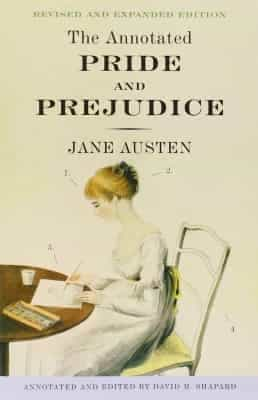Books I’ve read this week:
Completed books:
Here We Come, by Chautona Havig
This book turned out to be just as exciting as the synopsis promised. For a while—probably getting close to half-way through—I was wondering if the story would ever deliver on the promise that “she’s faced with her worst nightmare”, when suddenly BANG it happened. I had been mulling over all the possible ways the worst could happen, and had come up with this scenario (except with a different person) so it wasn’t entirely a surprise. Even so, it was quite shocking and really made the story fun—although full of tension for a while there!
I also found it interesting to see how Chautona crafted the ending of the story, bringing the whole plot together in the end. It was also interesting to think about the fact that the first two books would have acted as the first and second acts, while this last would be the third act, which means in the end that this last book would be kind of like one HUGE climax. That would take some work to write, because having a several-chapter climax is one thing, whereas in this case it would be a one-book climax.
It was also fun to try to figure out the three acts in the individual books—and seeing how they fit into the overall plot. For me, this reinforced the fact that no matter what you write, no matter what part of the story it is—whether it’s a scene, a couple of chapters, or a whole act—everything can have three acts to it (set up, confrontation, resolution). Now, to apply that to my writings….
Books I’m currently reading:
The Sound of Diamonds, by Rachelle Rea
Progress: 15%
This story has proved to be very interesting so far! So far, I’ve met Lady Gwyneth, a short-sighted eighteen-year-old who’s trying to hide from the man who killed her parents. Then there’s Dirk, the man she knows killed her parents—although he says he didn’t. Add in an Iconoclastic raid on the small Catholic convent where she’s been hiding—the year is 1566—and Dirk trying to convince her to trust him enough to help her get out of the building alive, and that’s basically the premise of the story so far. I’ve really enjoyed the story so far, and look forward to seeing where it goes from here.
The Annotated Pride and Prejudice, by David M. Shapard
Progress: 224 pages read out of 755 (roughly 30%)
I started reading this as part of my school work—one aspect of my school is a literature course, and I’ve been reading some old classics through that. The book I read before this was a semi-annotated version of Oliver Twist that I loved!
I’ve heard a “dramatic” audio version of this story before from LibriVox, and possibly also a dramatized version we got somewhere for free, so this isn’t all new to me. Which is rather fun, because since I know the general direction of where the plot is headed it’s fun to see all the foreshadowing. This annotated version is also pretty helpful in that respect.
I have had lots of fun laughing at the bumbling, pompous Mr. Collins—who always seems to be talking about humility and money. It’s also interesting to see how Mr. Wickham tells Elizabeth of his past, skirting around some points that will be revealed later in the story. All in all, I’m enjoying the story again, and am looking forward to reading more.
Happening of the week:
Last Monday, Dad had the day off because of Queen’s Birthday—a public holiday here. Part of the work he tackled was to fix up a huge set of shelves Mom found, and get it into our garage so we can store our squash and pumpkins in a dry place—hopefully they’ll stay good longer this way.

“Before” picture—as things were being cleaned up. (Note to self: Do not attempt to take pictures while holding a wriggly baby. The result does not look very good.)
Before he could put the shelves in the garage, though, he had to clean out all the rubbish that somehow tends to collect there. We also had quite a few totes full of clothing being stored there, and those had to be taken out to the shipping container to make room.

The shelves must be around nine feet tall, and they’re HEAVY! Thankfully, Dad and my brothers were able to get them in without much trouble. I was babysitting little sis, and she wanted to eat my camera, so I had a hard time getting pictures as things happened.

Sadly, I didn’t get a picture of her with her mouth open.
The finished product, after the pumpkins were transferred onto the shelves.

“After” picture.
Useful posts this week:
- The Free Planners for June 2015 Are Available — I’ve been using these planners for over three months now, and they’ve proved to be very helpful. With them, I can see my time blocks—how much time I have, how much I want to get done in that time, and how long I expect each task to take. I don’t use one of these every day, but I definitely use them 3 – 4 days a week.
- Midweek Music XIV: To celebrate summer — I’ve been following this series for quite a while now, and I always enjoy seeing what Rebekah comes up with. This week was no exception. I love the classical style this piece has, even though it was written so recently. I think my favorite of the two videos would be the first, and I love the little part there at the end where the young man’s helpers pull out the stops—I’ve been curious to see how that’s done, ever since reading about it in A Murder for Her Majesty.
- Season 4, Episode 2: Setting Up Camp in the Discomfort Zone [Podcast] — I enjoy listening to helpful podcasts when I can, and Michael Hyatt’s is always at the top of the list in the order of what I listen to first. His are the most helpful that I’ve come across so far. I especially found this episode encouraging—because I’m often in the position of the “discomfort zone”, and learning to enjoy it is a challenge.
- A Year of Reading Challenges for Kids — Since I don’t have many articles this week, Mom sent this to me to include. Looks interesting—something I’d like to try one year!
Resource of the week:

Smallpdf Screenshot
I use this free online tool a LOT. Most of the time, I use it to merge files, but I also have used the PDF to Word tool—which worked very well. This is very fast as far as upload time, and also converts quickly. I also like the fact that I don’t have to enter my email address in order to get my things converted. Overall, this is a very nifty tool, one that I highly recommend for all your PDF needs.
New book reviews this week:
- Case for Faith for Kids
- Ready or Not
- For Keeps
- Here We Come
- Courage and Conviction
- Rascal
- The More Abundant Life
- Be Your Child’s Pediatrician
What books have you been reading lately? Have you read Pride and Prejudice before?
Have a great week!
Esther










 Peanut Butter Balls Recipe
Peanut Butter Balls Recipe